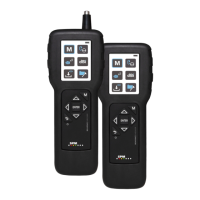12
The guidelines for the selection of shock pulse measuring
points have a very practical purpose. The aim is to capture
low energy signals, which are getting weaker the farther they
travel and the more they are bounced about inside a piece of
metal. We know that they lose strength when they cross over
from one piece of metal to another. We cannot know, for all
bearing applications, how much of the strength of the signal
emitted by the bearing will reach the measuring point. How-
ever, by necessity we try to apply general evaluation rules, i. e.
treat all measured signals as if they were of the same quality.
The rules for shock pulse measuring points try to assure that
most of them are ”within tolerance” and that the green-
yellow-red condition zones are valid:
1 The signal path between bearing and measuring
point shall be as short and straight as possible.
2 The signal path must contain only one mechanical
interface: that between bearing and bearing housing.
3 The measuring point shall be located in the load zone
of the bearing.
“Short” means up to 75 mm (3 in.), but that depends also
on how straight the path is: bends cause re- and deflections
whose effects are hard to judge. The load zone is the load
carrying half of the bearing housing, normally the lower one.
Allow for the pull of belts or other forces which can shift the
load to one side. Use the probe to find the spot yielding the
strongest signal. When a measuring point cannot conform to
the rules (because an ideal spot cannot be reached), make
allowance for a weaker signal.
Measuring
point
Load
1. Straight and short path
2. No interface!
3. In the load zone of the
bearing
Guidelines for measuring points

